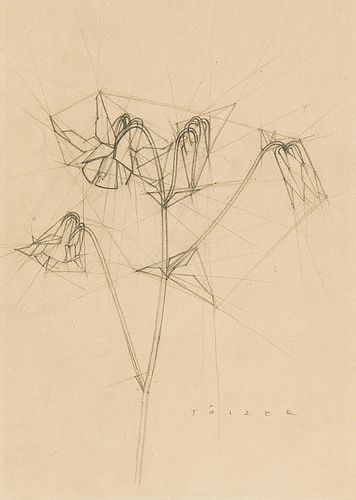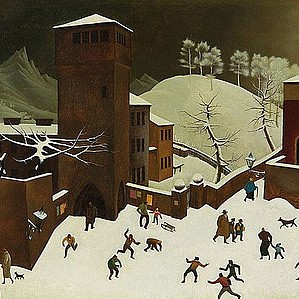PETER TÖLZER (Vienna 1910 - 1997 Vienna) Bellflower
Lot 173
Categories
Estimate:
EUR€1,500 - EUR€3,000
$1,612.90 - $3,225.81
Absentee vs Live bid
Two ways to bid:
- Leave a max absentee bid and the platform will bid on your behalf up to your maximum bid during the live auction.
- Bid live during the auction and your bids will be submitted real-time to the auctioneer.
Bid Increments
| Price | Bid Increment |
|---|---|
| EUR€0 | EUR€10 |
| EUR€100 | EUR€50 |
| EUR€700 | EUR€100 |
| EUR€1,000 | EUR€200 |
| EUR€3,000 | EUR€300 |
| EUR€3,600 | EUR€400 |
| EUR€4,000 | EUR€500 |
| EUR€7,000 | EUR€1,000 |
| EUR€16,000 | EUR€2,000 |
| EUR€30,000 | EUR€3,000 |
| EUR€36,000 | EUR€4,000 |
| EUR€40,000 | EUR€5,000 |
About Auction
By Widder Auctions
May 19, 2022
Set Reminder
2022-05-19 11:00:00
2022-05-19 11:00:00
America/New_York
Bidsquare
Bidsquare : Masterpieces
https://www.bidsquare.com/auctions/widder-auctions/masterpieces-9287
Masterpieces of classical modernism by Austrian and international artists coming up for auction in Vienna on May 19th Widder Auctions office@widderauktionen.com
Masterpieces of classical modernism by Austrian and international artists coming up for auction in Vienna on May 19th Widder Auctions office@widderauktionen.com
- Lot Description
PETER TÖLZER*
(Vienna 1910 - 1997 Vienna)
Bellflower
pencil/paper, 31 x 22,5 cm
signed Tölzer
Provenance: private collection Vienna
ESTIMATE °€ 1.500 - 3.000
Austrian artist of the 20th century. Representative of the Viennese avant-garde and kinetism. Studied at the Vienna School of Applied Arts with Franz Cizek and Bertold Löffler. From 1935 to 1953 assistant and later head of the class for commercial, illustration and fashion graphics. Early works in the style of Kinetism as also Peter Tölzer, Erika Giovanna Klien, My Ullmann, Paul Kirnig, Elisabeth Karlinsky, Georg Anton Adams-Teltscher, Gertraud Brausewetter, Margarete Hamerschlag, Erika Giovanna Klien, Elisabeth Karlinsky, Paul Kirnig, Friedericke Nechansky, Gertrude Neuwirth, Ernst Anton Plischke, Johanna Reismayer, Ludwig Reutterer, Leopold Wolfgang Rochowanski, Emil Stejnar, Hertha Sladky, Harry Täuber, Gertrude Tomaschek, Otto Erich Wagner, Stella Weissenberg. From the 1920s, he turned away from Kinetism and toward representational painting and the New Objectivity.
Since kinetism represents the first art movement of modernism whose most important representatives were female, the male ones form a minority. And since kinetism is less a "movement" than a teaching method, many of the artistic examples from Franz Cižek's theory of forms and his legendary children's and youth art classes are student drawings that have an incredible formal precision in common, but whose authors are mostly completely unknown and have often remained anonymous. Paul Kirnig's crystalline forms are the means of expression of that metaphor of light and crystal which kinetism as a special form of cubism. A first impression of the cubist formal language could be gained understood in 1914 in the first comprehensive Picasso exhibition in the Miethke Gallery in Vienna. The contemporary writer and art mediator Leopold Wolfgang Rochowanski recognised early on that Cižek's Cubism was "different" from Picasso's and arrives at the quintessence: "Cubism, says Professor Cižek, is the crystalline expression of libidinously urgent design energies". Kirnig not only analyses crystalline forms here, but brings them to break under an imaginary pressure, thus creating that chaos which, according to Rochowansky, was also calculated into Cižek's working methods: "The lesson (oh old word!) begins with the invitation to give oneself without restraint, with the unbridled wildness of existing energies. The result: chaos. But the very next lesson calls: reflection. And the next increase is called: order."
PLEASE NOTE:
The purchase price consists of the highest bid plus the buyer's premium, sales tax and, if applicable, the fee of artists resale rights. In the case of normal taxation (marked ° in the catalog), a premium of 24% is added to the highest bid. The mandatory sales tax of 13% is added to the sum of the highest bid and the buyer's premium. The buyer's premium amounts to 28% in case of differential taxation. The sales tax is included in the differential taxation. - Shipping Info
-
Shipping
We will send you the invoice shortly after the auction. As soon as we have recieved the amount, the art can be picked up at Johannesgasse 9-13, 1010 Vienna. Please note that the buyer is responsible for pick-up and shipping of the lot.
Should you wish to ship your items, please contact: Mailboxes Email: oper@mbe-co.at Tel: 01 5128855
Please note that storage fees may apply, should the pieces not be picked up within 14 days after invoicing for domestic and 28 days for international transportation.
Our team will be happy to assist you with any further information at office@widderauktionen.com or at 0043 676 555 66 10.
-
- Buyer's Premium



 EUR
EUR CAD
CAD AUD
AUD GBP
GBP MXN
MXN HKD
HKD CNY
CNY MYR
MYR SEK
SEK SGD
SGD CHF
CHF THB
THB












